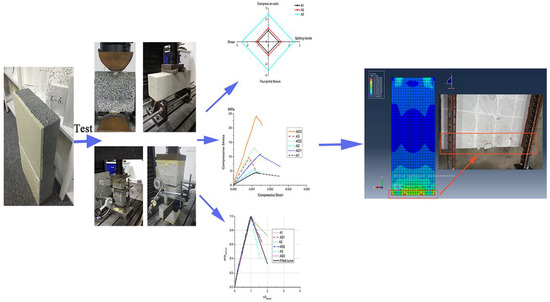Experimental Research on the Mechanical Properties of Tailing Microcrystalline Foam Glass
Abstract
:1. Introduction
2. Materials
2.1. Batch Composition
2.2. Production Process
2.3. Physical Properties of the Specimens
3. Test Setup and Instruments
3.1. Four-Point Flexural Tests
3.2. Splitting Tensile Strength Test
3.3. Compression Test
3.4. Shear Test
4. Test Results
4.1. Four-Points Flexural Test
4.2. Compressive, Shear and Splitting Tensile Strength
4.3. Stress–Strain Constitutive Relations
4.4. Modulus of Elasticity and Poisson’s Ratio
5. Discussion
5.1. Influence of the Physical Properties on the Mechanical Properties
5.2. Evaluation of the Elastic Modulus
6. Conclusions
- (1)
- With the reduction of the amount of SiC, the porosity decreased, so that the mechanical properties improved. The improvement in the various mechanical properties was similar. The cubic compressive strength of TMFG without microcrystalline decoration surfaces was close to the prism compressive strength. The cubic compressive strength was about 1.04 times the prism compressive strength. The cubic compressive strength was about 4.7 times the shear strength, about 6.64 times the splitting tensile strength, and 2.92 times the flexural strength.
- (2)
- The microcrystalline decorative surface improved the compressive and flexural strengths of TMFG. The compression strength of group AD was about twice that of group A. The flexural strengths of groups ADt and ADs were, respectively, 2.31 and 1.4 times greater than those of group A, and the orientation of the specimens significantly influenced the flexural strength of the specimens with the microcrystalline decoration surface. The flexural strength of group ADt was approximately 1.64 times that of ADs. The stress–strain curve of TMFG could be expressed by the 3-fold line equation.
- (3)
- With the reduction of the amount of SiC, the modulus of elasticity of TMFG increased. The modulus of elasticity of TMFG was lower than the calculated value obtained using the concrete-specific formulas, and the highest ratio between the experimental and the calculated results was 3.12 times. A formula is proposed to estimate the modulus of elasticity of TMFG.
- (4)
- With the increase in the compressive strength of TMFG, the Poisson’s ratio decreased. The Poisson’s ratio of the specimens with the microcrystalline decoration surface was slightly smaller than that of the specimens without the microcrystalline decoration surface.
Author Contributions
Funding
Acknowledgments
Conflicts of Interest
References
- Banhart, J. Manufacture and characterization and application of cellular metals and metal foams. Prog. Mater. Sci. 2001, 46, 559–632. [Google Scholar] [CrossRef]
- Méar, F.; Yot, P.; Viennois, R.; Ribes, M. Mechanical behavior and thermal and electrical properties of foam glass. J. Ceram. Int. 2007, 33, 543–550. [Google Scholar] [CrossRef]
- Spiridonov, Y.A.; Orlova, L.A. Problems of Foam Glass Production. Glass Ceram. 2003, 60, 313–314. [Google Scholar] [CrossRef]
- Lebullenger, R.; Chenu, S.; Rocherullé, J.; Merdrignac-Conanec, O.; Cheviré, F.; Tessier, F.; Bouzaza, A.; Brosillon, S. Glass foams for environmental applications. J. Non-Cryst. Solids 2010, 356, 2562–2568. [Google Scholar] [CrossRef]
- Bernardo, E.; Cedro, R.; Florean, M.; Hreglich, S. Reutilization and stabilization of wastes by the production of glass foams. Ceram. Int. 2007, 33, 963–968. [Google Scholar] [CrossRef]
- Bento, A.C.; Kubaski, E.T.; Sequinel, T.; Pianaro, S.A.; Varela, J.A.; Tebcherani, S.M. Glass foam of macroporosity using glass waste and sodium hydroxide as the foaming agent. Ceram. Int. 2013, 39, 2423–2430. [Google Scholar] [CrossRef]
- Fernandes, H.R.; Tulyaganov, D.U.; Ferreira, J.M.F. Preparation and characterization of foams from sheet glass and fly ash using carbonates as foaming agents. Ceram. Int. 2009, 35, 229–235. [Google Scholar] [CrossRef]
- Chen, K.; Wu, Y. Foam Glass and Foam Glass-Ceramic. China Nonmet. Miner. Ind. 1997, S1, 17–18. [Google Scholar]
- Guo, X.; Gao, S.; Guo, H. Strengthening Techniques of Foam Glasses. Mater. Rev. 2011, 25, 112–113. [Google Scholar]
- Bernardo, E. Micro-and macro-cellular sintered glass-ceramics from wastes. J. Eur. Ceram. Soc. 2007, 27, 2415–2422. [Google Scholar] [CrossRef]
- Mohamed, E.; Shahsavari, P.; Eftekhari-Yekta, B.; Marghussian, V.K. Preparation and Characterization of Glass Ceramic Foams Produced from Copper Slag. Trans. Indian Ceram. Soc. 2015, 74, 1–5. [Google Scholar] [CrossRef]
- Bernardo, E.; Esposito, L.; Rambaldi, E.; Tucci, A. Sintered glass ceramic articles from plasma vitrified asbestos containing waste. Adv. Appl. Ceram. 2011, 110, 346–352. [Google Scholar] [CrossRef]
- Sousa, E.D.; Silveira, C.B.; Fey, T.; Greil, P.; Hotza, D.; de Oliveira, A.N. IZSA glass ceramic foams prepared by replication process. Adv. Appl. Ceram. 2005, 104, 22–29. [Google Scholar] [CrossRef]
- Matamoros-Veloza, Z.; Yanangisawa, K.; Rendon-Angeles, J.C.; Oishi, S.; Cisneros-Guerrero, M.A. Prepareation of porous glass-ceramics under different hydrothermal hot pressing conditions. Solid State Ion. 2004, 172, 1–4. [Google Scholar]
- Fernandes, H.R.; Tulyaganov, D.U.; Ferreira, J.M.F. Production and characterisation of glass ceramic foams from recycled raw materials. Adv. Appl. Ceram. 2009, 108, 9–13. [Google Scholar] [CrossRef]
- Chen, B.; Wang, K.; Chen, X.; Lu, A. Study of foam glass with high content of fly ash using calcium carbonate as foaming agent. Mater. Lett. 2012, 79, 263–265. [Google Scholar] [CrossRef]
- Hrma, P. Effect of heating rate on glass foaming: Transition to bulk foam. J. Non-Cryst. Solids 2009, 355, 257–263. [Google Scholar] [CrossRef]
- Méar, F.; Yot, P.; Ribes, M. Effects of temperature, reaction time and reducingagent content on the synthesis of macroporous foam glasses from waste funnel glasses. Mater. Lett. 2006, 60, 929–934. [Google Scholar] [CrossRef]
- Bernardo, E.; Albertini, F. Glass foams from dismantled cathode ray tubes. Ceram. Int. 2006, 32, 603–608. [Google Scholar] [CrossRef]
- Ding, L.; Ning, W.; Wang, Q.; Shi, D.; Luo, L. Preparation and characterization of glass–ceramic foams from blast furnace slag and waste glass. Mater. Lett. 2015, 141, 327–329. [Google Scholar] [CrossRef]
- Zhu, M.; Ji, R.; Li, Z.; Wang, H.; Liu, L.; Zhang, Z. Preparation of glass ceramic foams for thermal insulation applications from coal fly ash and waste glass. Constr. Build. Mater. 2016, 112, 398–405. [Google Scholar] [CrossRef]
- Test Methods Forglazed Tile GB/T 3810.3-2016; Standards Press of China: Beijing, China, 2016.
- Test Method for Inorganic Hard Insulation Products GB/T 5486-2008; Standards Press of China: Beijing, China, 2008.
- Mattock, H. Shear Transfer in Reinforced Concrete; ACI: Naples, FL, USA, 1969. [Google Scholar]
- Hognestad, E. Concrete Stress Distribution in Ultimate Strength Design; ACI: Naples, FL, USA, 1955; pp. 455–479. [Google Scholar]
- Code for Design of Concrete Structures GB 50010-2010; Architecture & Building Press: Beijing, China, 2010.
- ACI Committee 318, Building Code Requirements for Structural Concrete (ACI 318-08) and the Commentary (318R-08); S. American Concrete Institute: Farmington Hills, MI, USA, 2008.
- Dhir, R.K.; Limbachiya, M.C.; Leelawat, T. Suitability of recycled concrete aggregate for use in BS 5328 designated mixes. Proc. Inst. Civ. Eng. Struct. Build. 1999, 134, 257–274. [Google Scholar] [CrossRef]
- Chen, Z.P.; Xu, J.J.; Zheng, H.H.; Su, Y.S.; Xue, J.Y.; Li, J.T. Basic Mechanical Properties Test and Stress-Strain Constitutive Relations of Recycled Coarse Aggregate Concrete. J. Build. Mater. 2013, 16, 24–32. [Google Scholar]

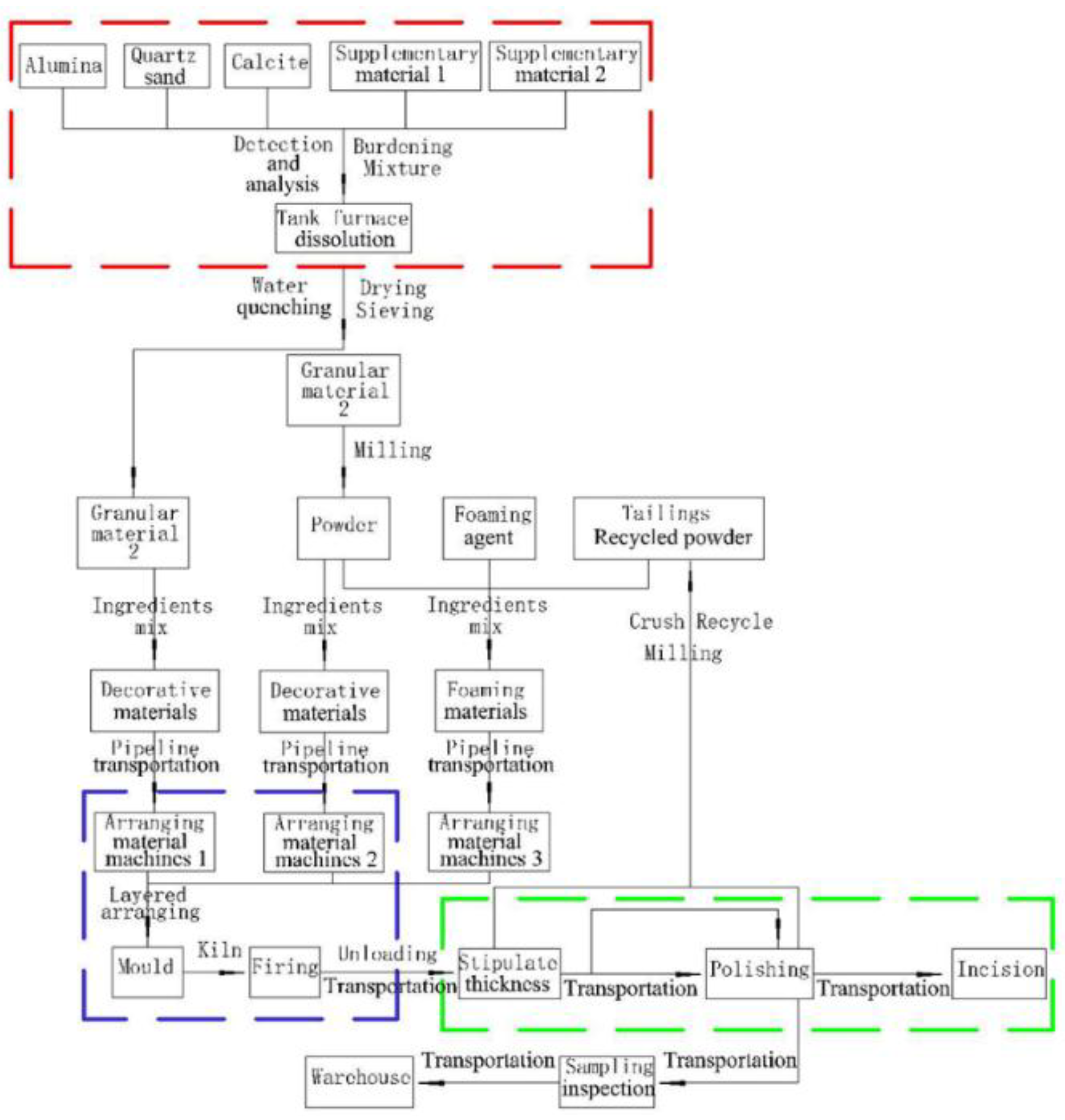
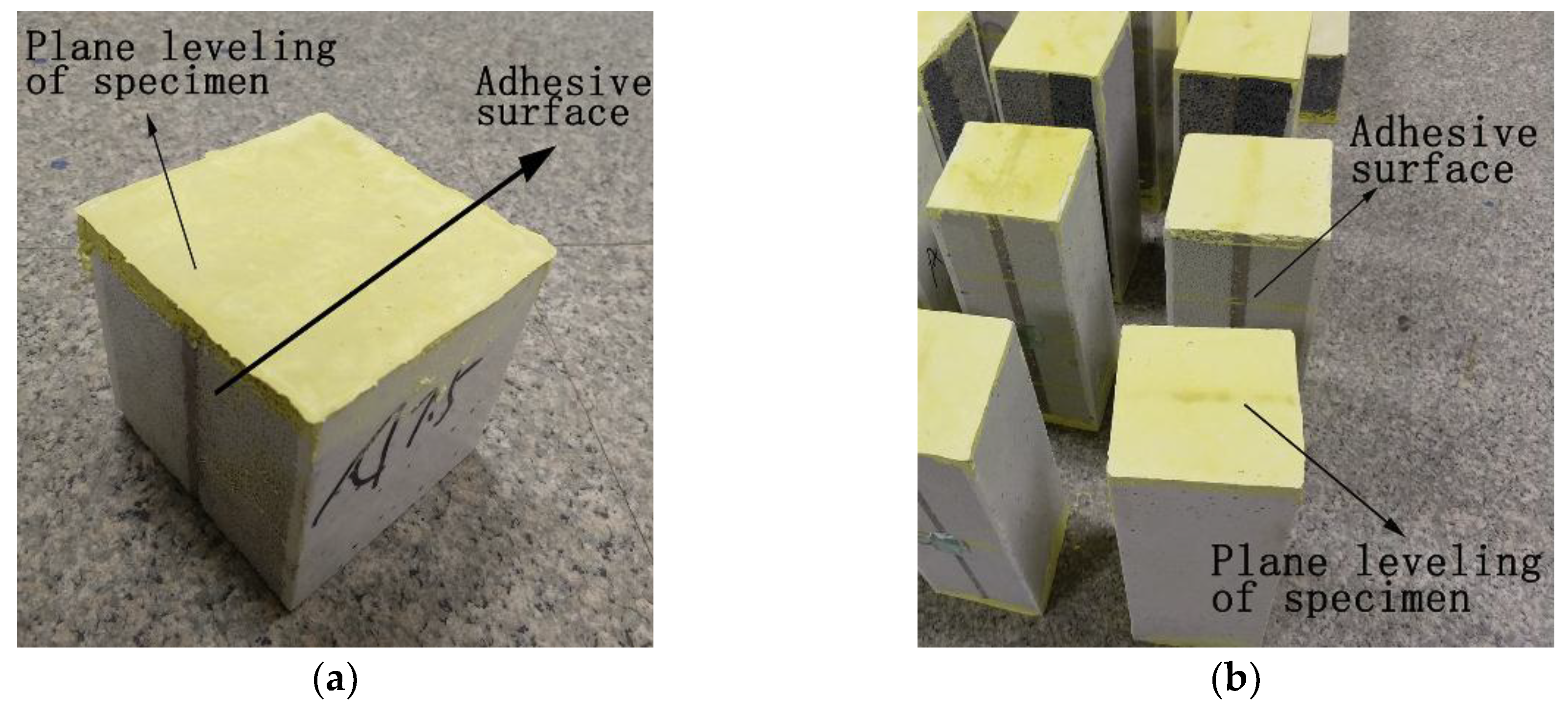
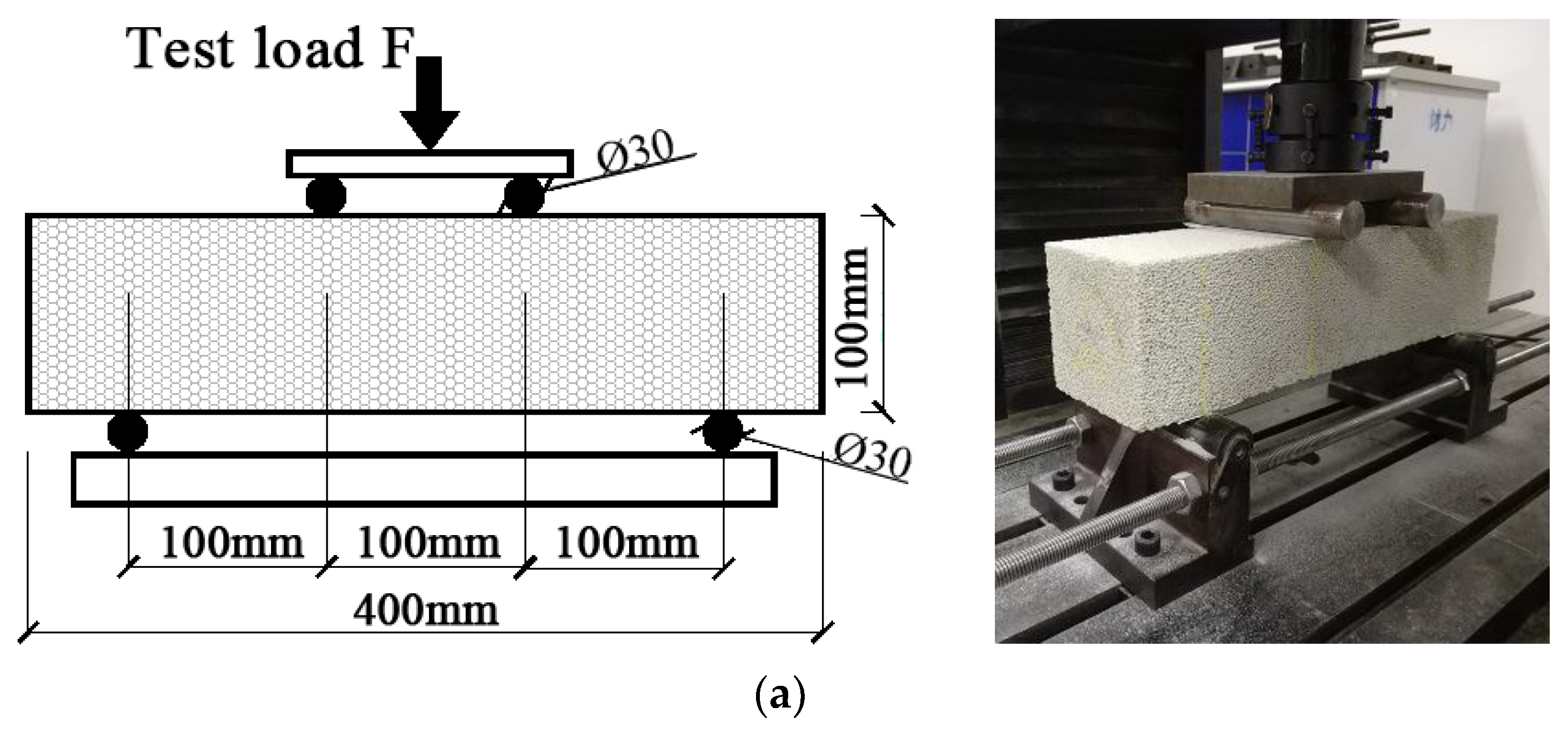
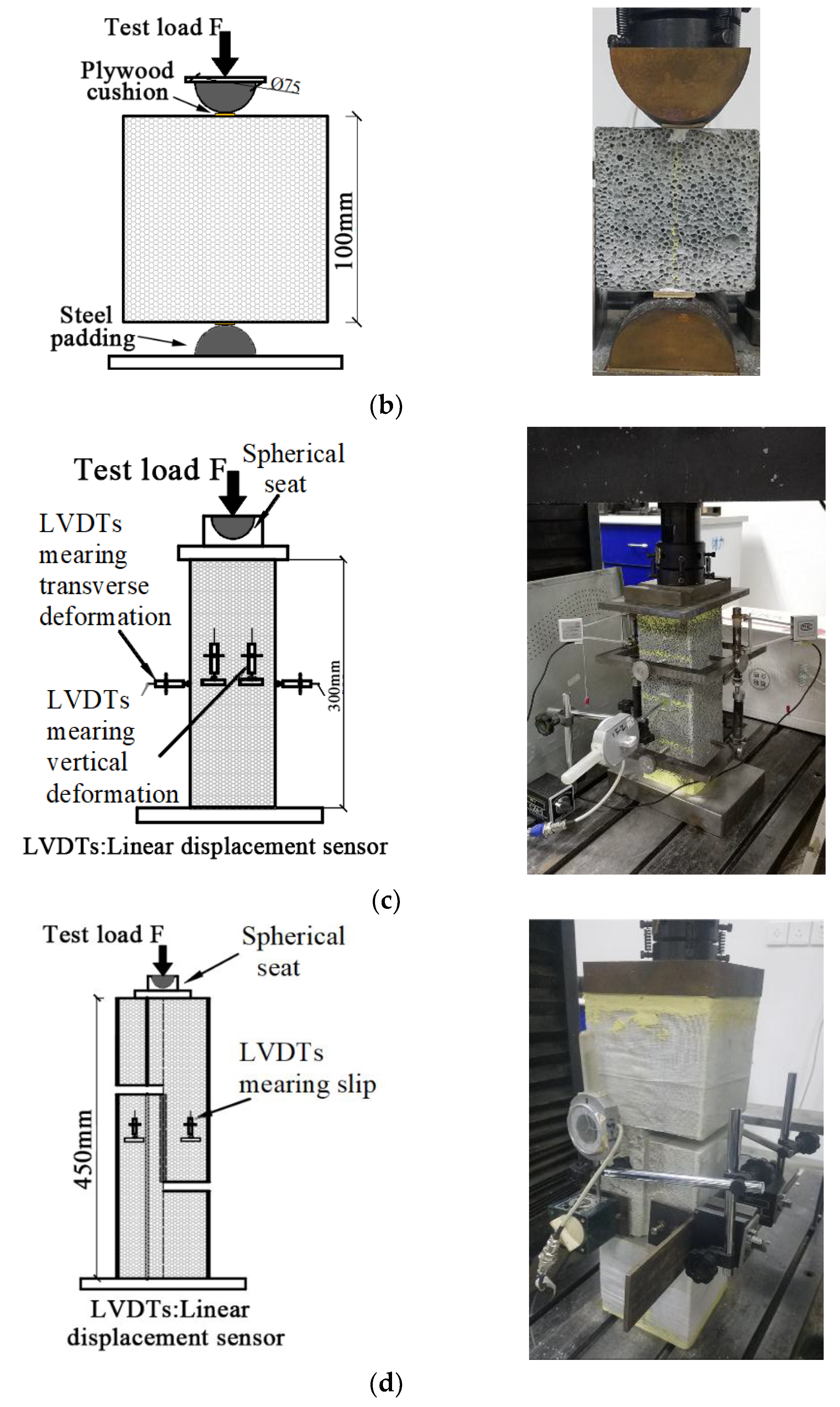

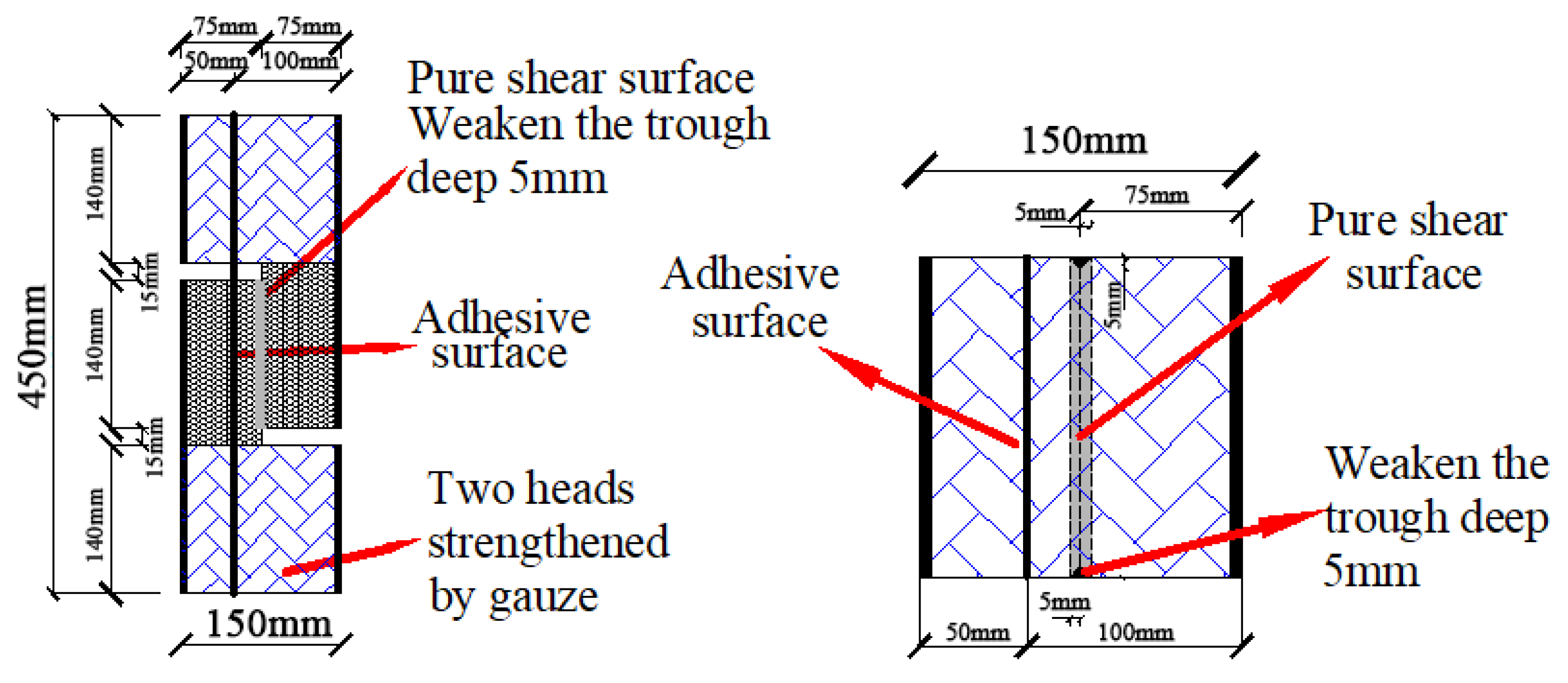
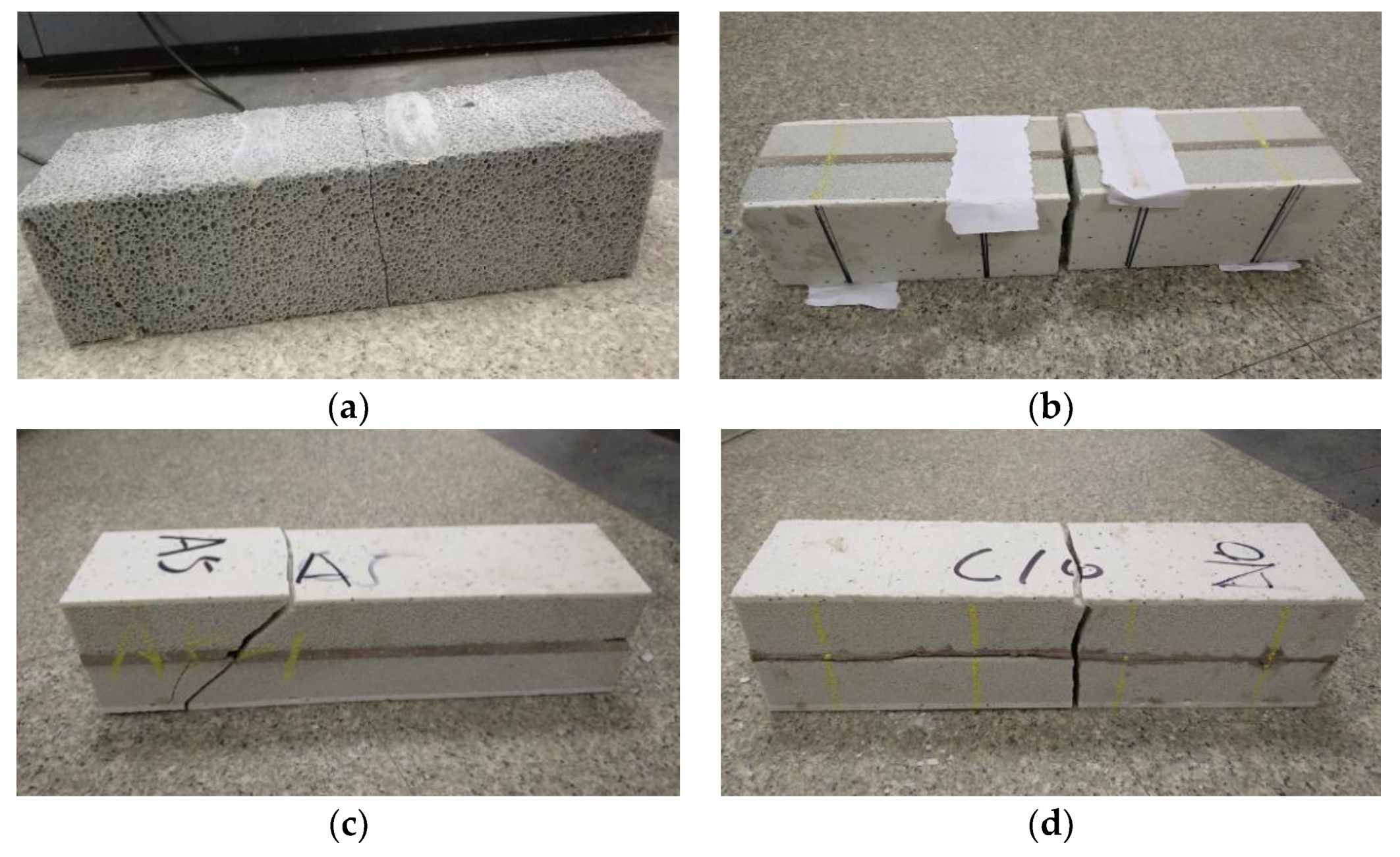


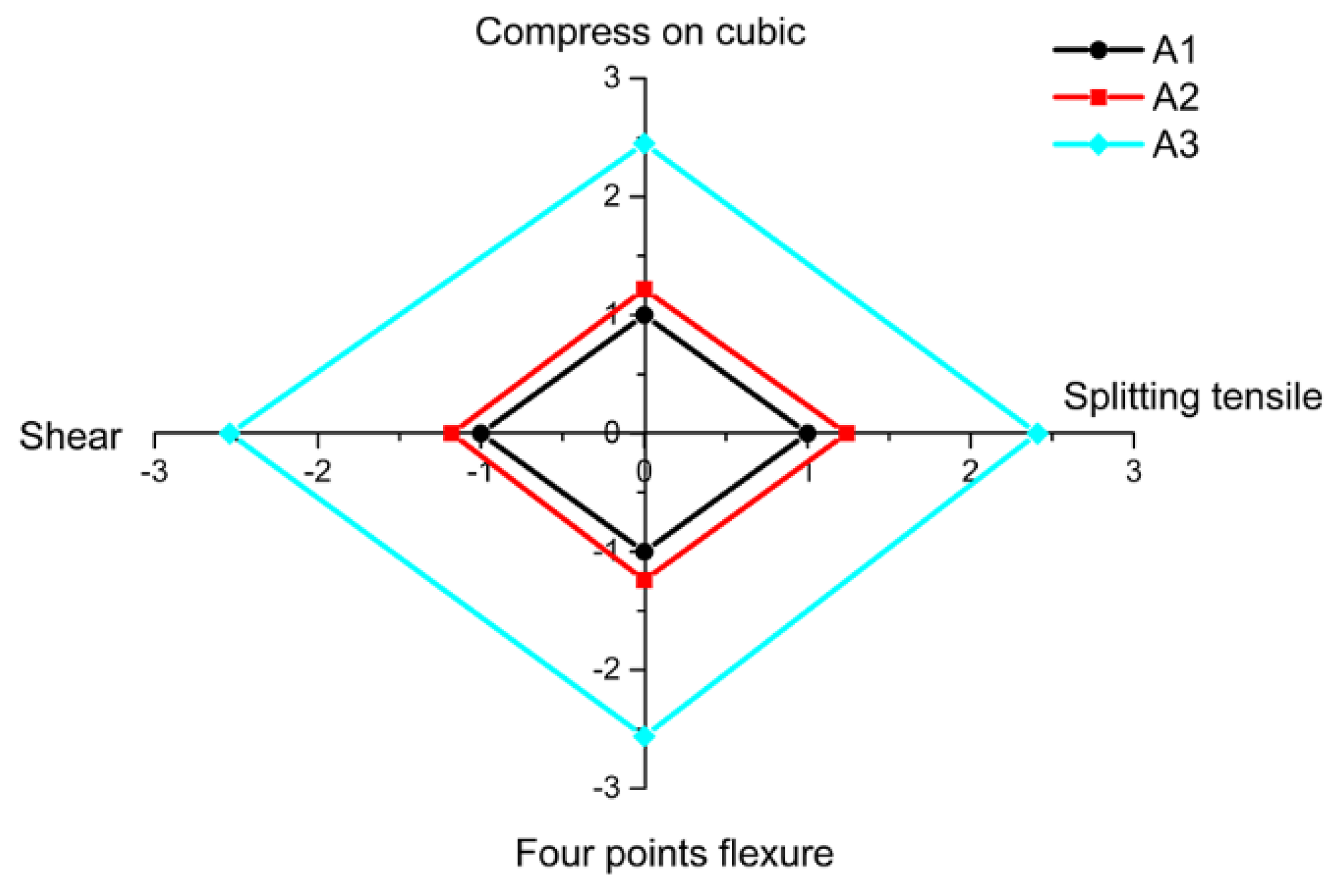
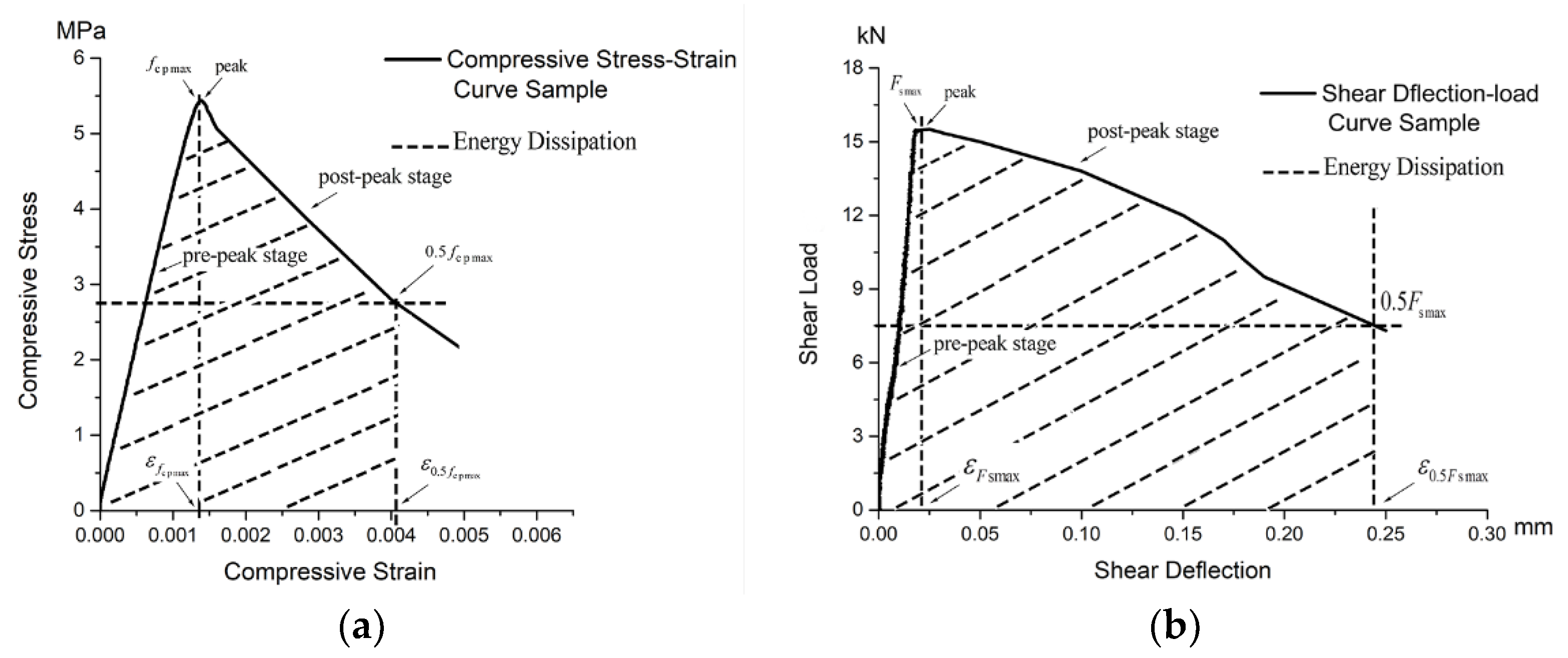
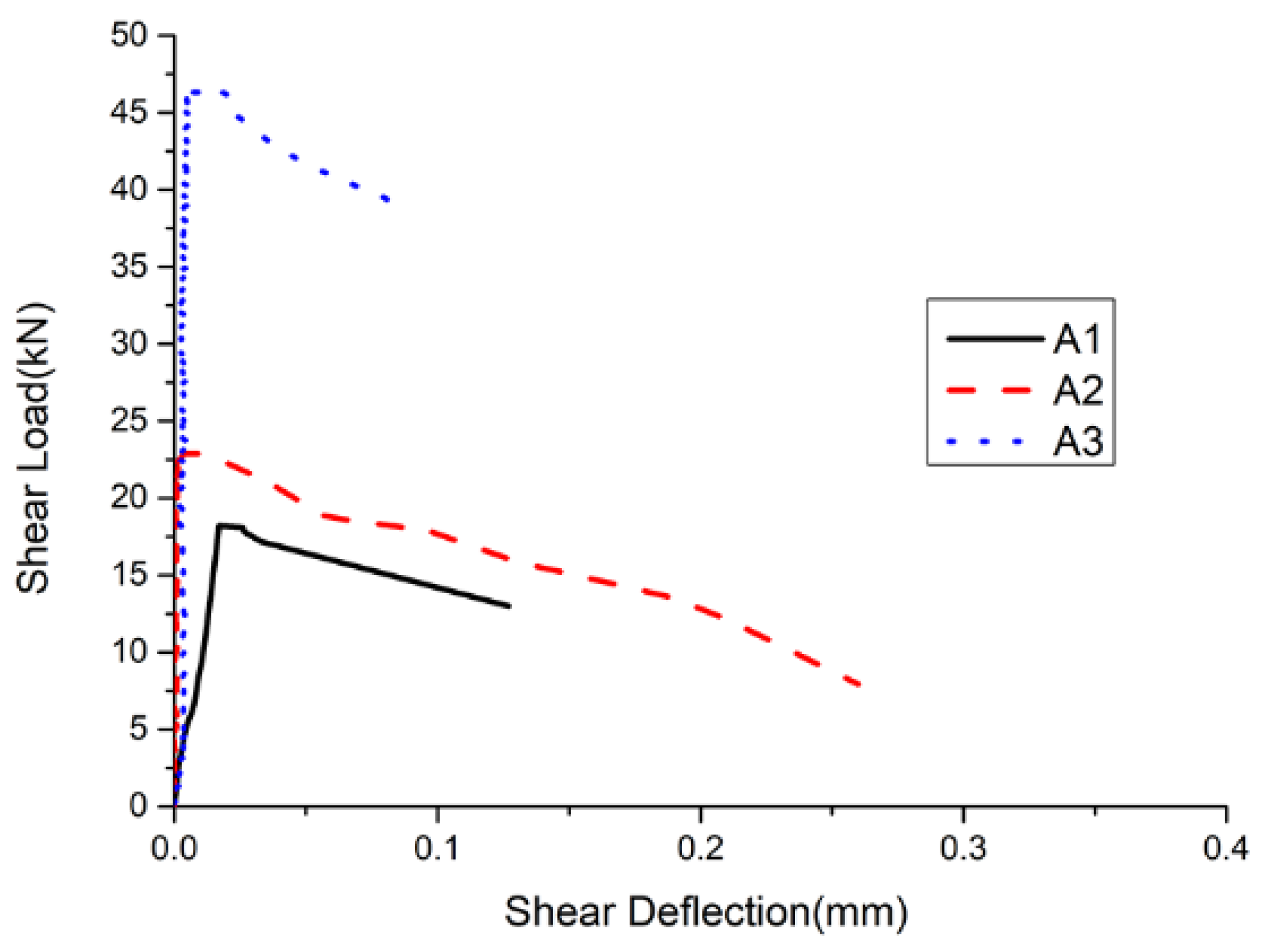
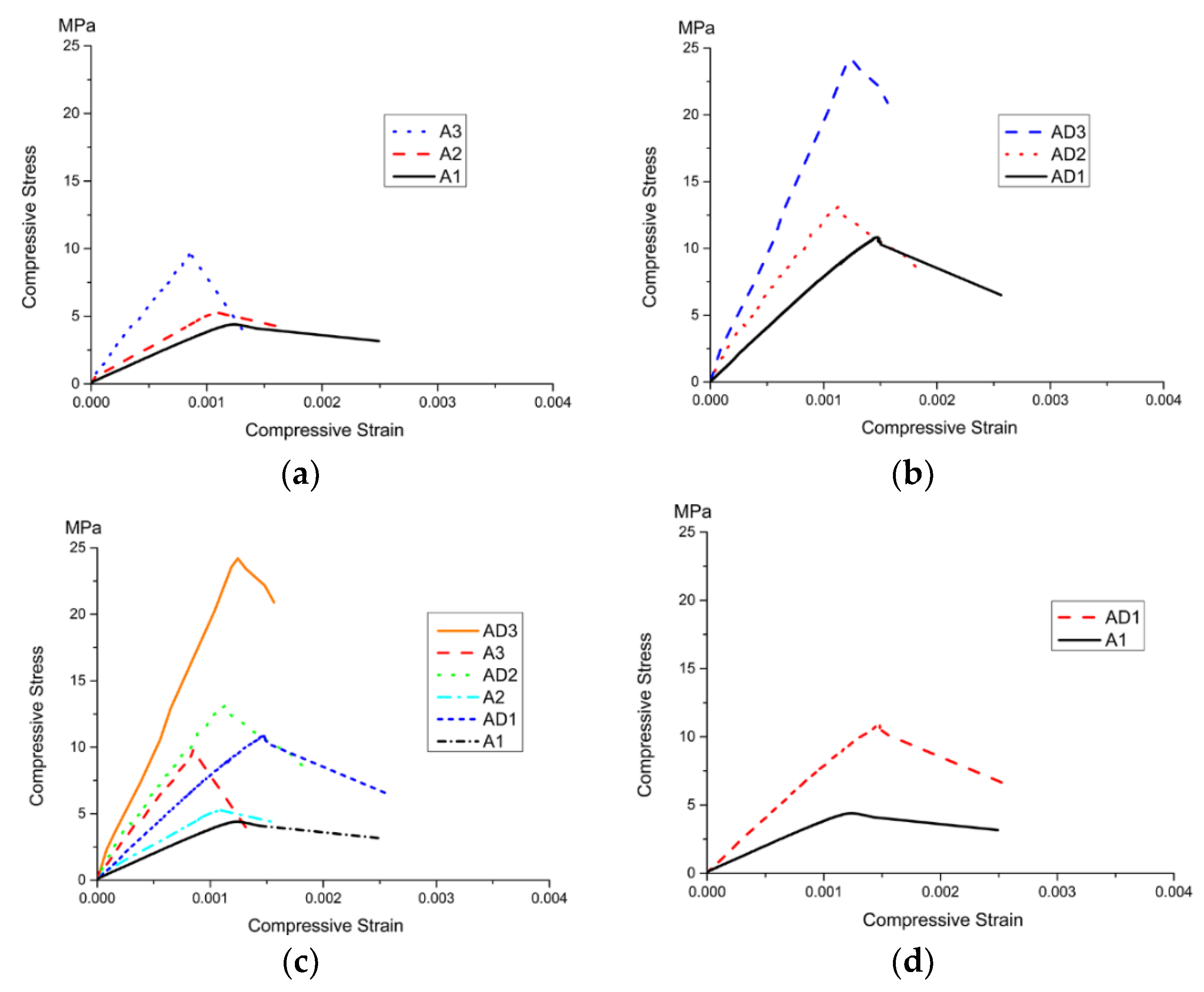
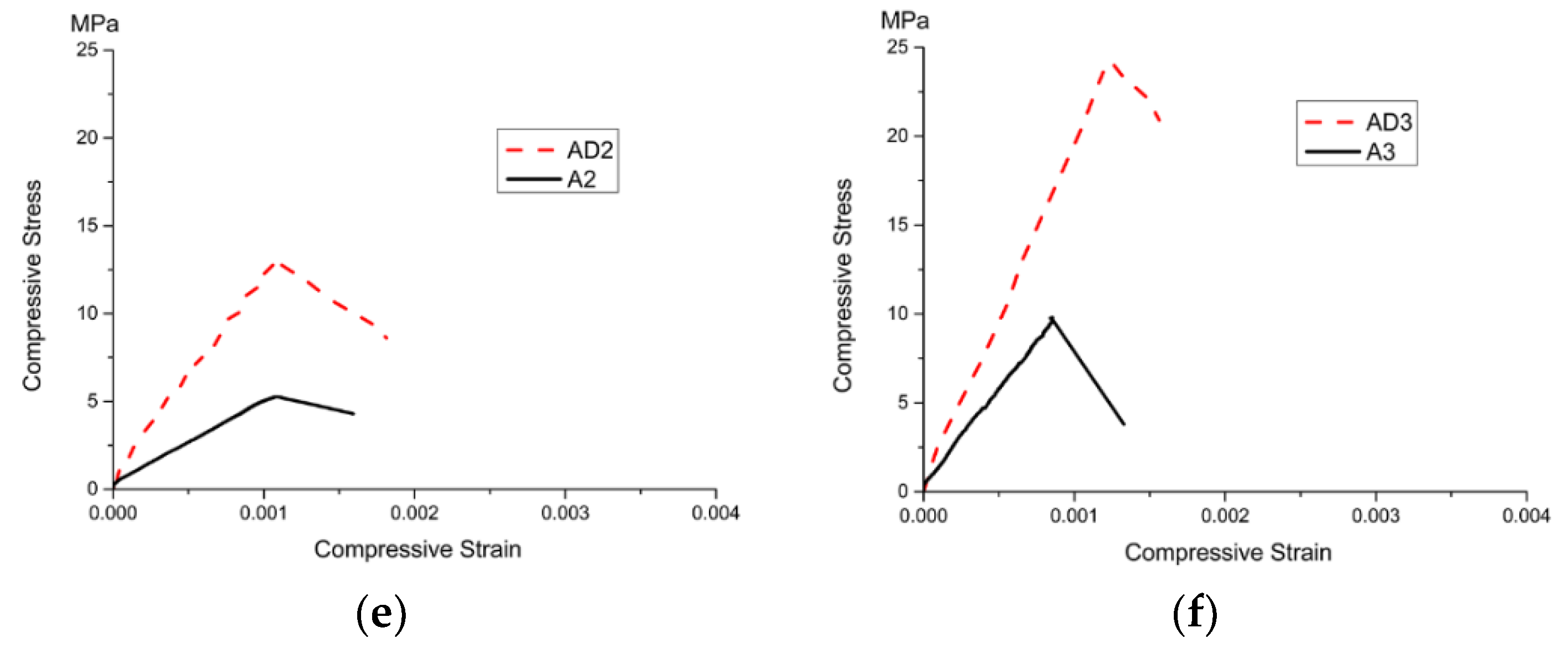
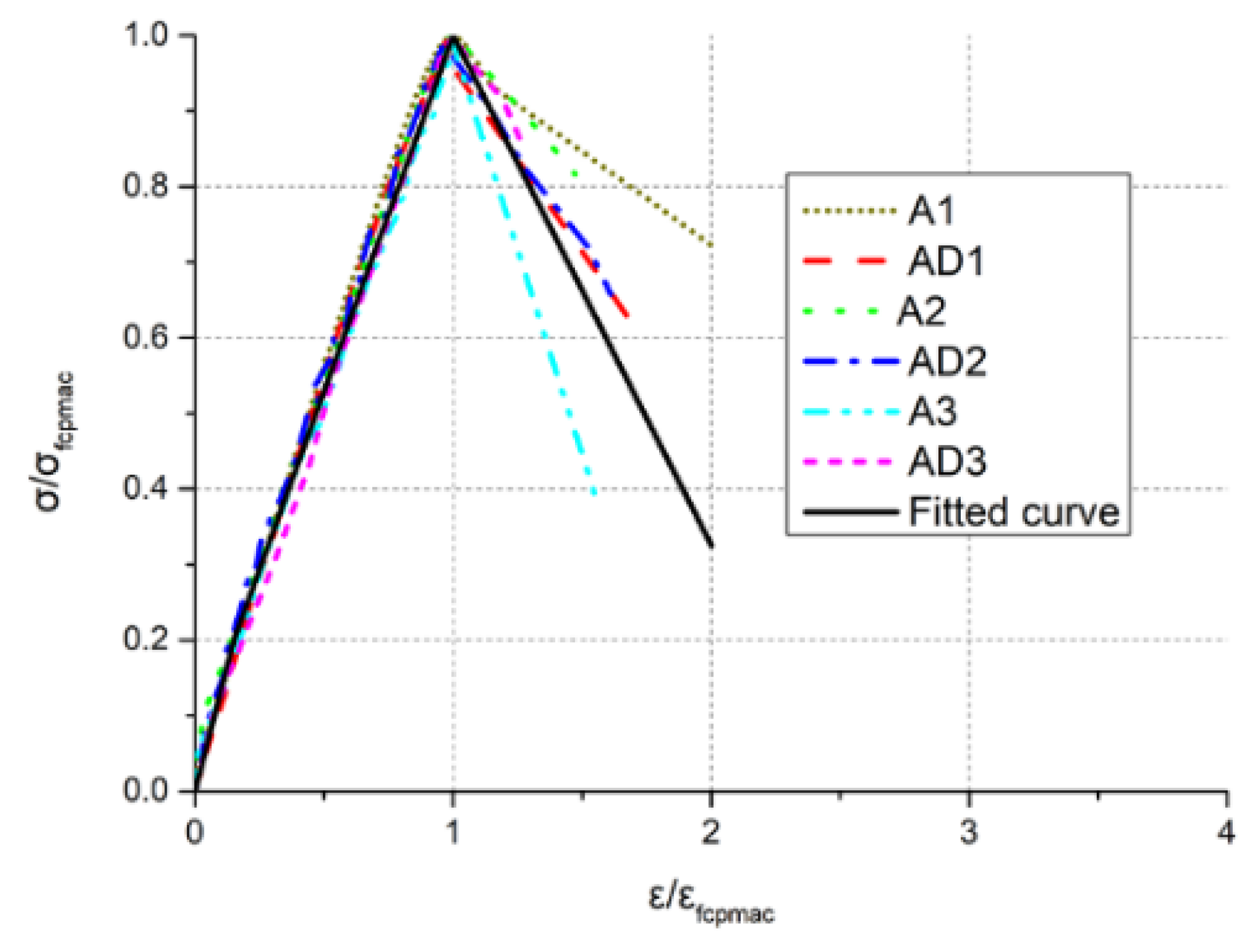

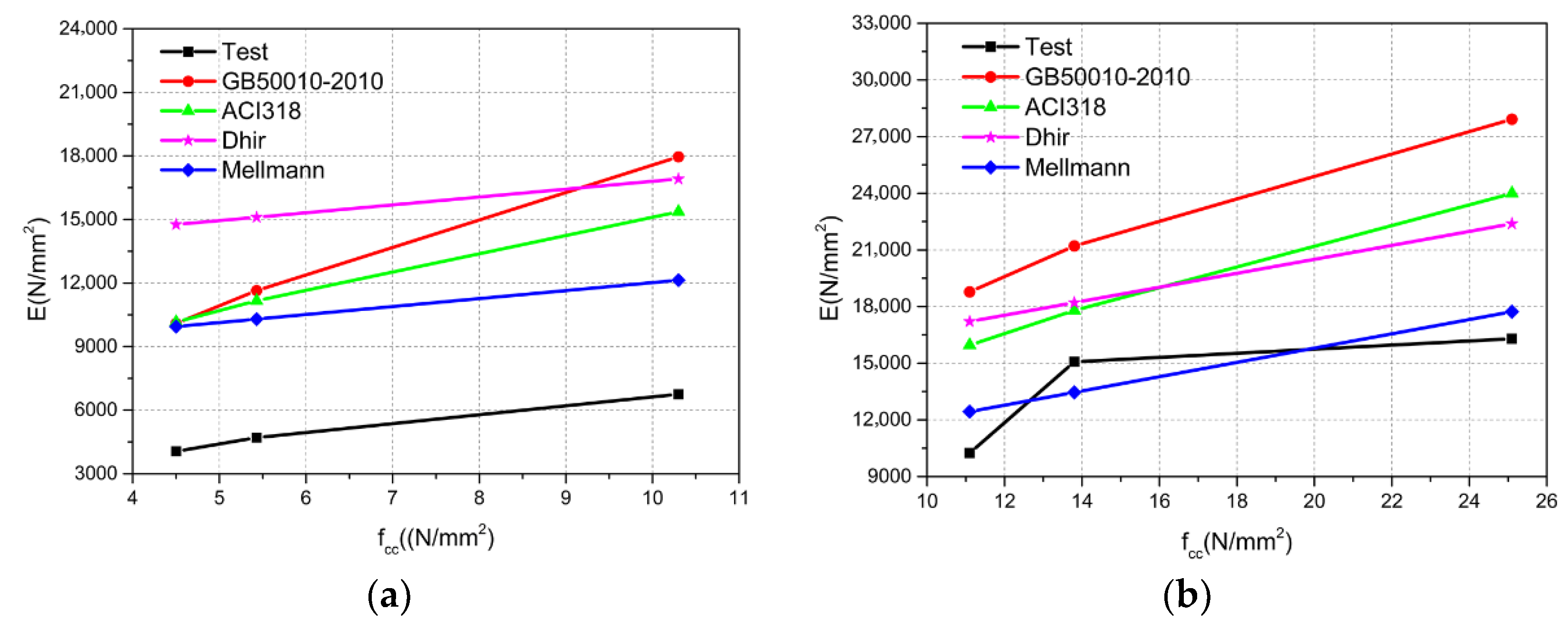
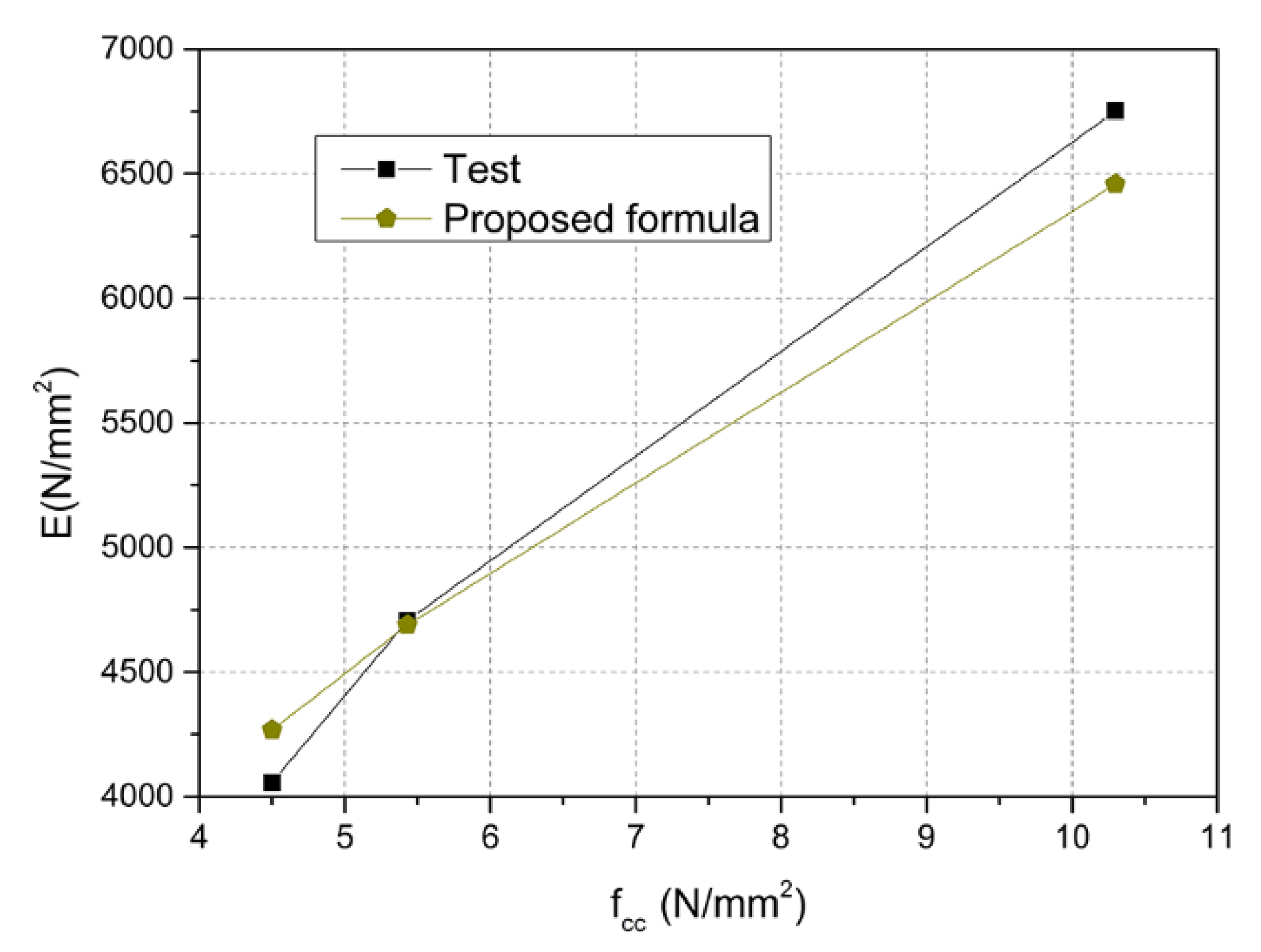
| Material | Bulk Density (kg/m3) | Water Absorption Rate (vol %) | Thermal Conductivity (W/(m·K)) | Compression Strength (MPa) |
|---|---|---|---|---|
| FG | 200–400 | 0.8–11.0 | 0.10–0.13 | 1.5–3.0 |
| MFG | 933–1070 | 5.0–11.0 | 0.27–0.30 | 5–11 |
| TMFG | 300–600 | 1.8–2.4 | 0.075–0.38 | 4.0–12.5 |
| Group | Main Raw Materials (%) | Foaming Agent (%) | Material of Decorative Surfaces (%) | |||
|---|---|---|---|---|---|---|
| Quartz | Waste Stone Residue | Waste Glass | SiC | Natural Gravel (Fine) | Natural Gravel (Coarse) | |
| A1 | 75 | 10 | 15 | 1.6 | ||
| A2 | 80 | 10 | 10 | 1.5 | ||
| A3 | 80 | 10 | 10 | 1.3 | ||
| AD1 | 75 | 10 | 15 | 1.6 | 8 | 2 |
| AD2 | 80 | 10 | 10 | 1.5 | 8 | 2 |
| AD3 | 80 | 10 | 10 | 1.3 | 8 | 2 |
| Group | Bulk Density (kg/m3) | Porosity (%) | Water Absorption (%) |
|---|---|---|---|
| A1 | 340 | 87.46 | 2.41 |
| A2 | 400 | 85.20 | 1.93 |
| A3 | 560 | 79.37 | 1.83 |
| Group | 1 | Ratio | 2 | Ratio | 3 | Ratio | Mean Ratio | Placing Way |
|---|---|---|---|---|---|---|---|---|
| A | 1.47 MPa | 1 | 1.83 MPa | 1 | 3.77 MPa | 1 | 1 | Top |
| ADt | 3.04 MPa | 2.06 | 5.68 MPa | 3.10 | 6.66 MPa | 1.77 | 2.31 | Top |
| ADs | 1.80 MPa | 1.22 | 3.32 MPa | 1.81 | 4.37 MPa | 1.16 | 1.40 | Side |
| Groups | Cubic Strength | Prism Strength | Splitting Tensile Strength | Shear Strength | Flexural Strength |
|---|---|---|---|---|---|
| A1 | 4.50 | 4.39 | 0.66 | 0.93 | 1.47 |
| A2 | 5.43 | 5.26 | 0.82 | 1.18 | 1.83 |
| A3 | 10.30 | 9.80 | 1.59 | 2.36 | 3.77 |
| AD1 | 11.1 | 10.74 | - | - | - |
| AD2 | 13.8 | 13.1 | - | - | - |
| AD3 | 25.1 | 24.2 | - | - | - |
| Groups | 1 | Ratio | 2 | Ratio | 3 | Ratio |
|---|---|---|---|---|---|---|
| A | 4056.83 | 1.00 | 4707.10 | 1.00 | 6752.50 | 1.00 |
| AD | 10,244.00 | 2.53 | 15,071.50 | 3.20 | 16,291.67 | 2.40 |
| Group | 1 | 2 | 3 |
|---|---|---|---|
| A | 1.41 | 0.88 | 0.44 |
| AD | 1.00 | 0.77 | 0.40 |
| Group | Test | GB50010 | ACI318 | Dhir | Mellmann |
|---|---|---|---|---|---|
| A1 | 4056.83 | 10,089.69 | 10,159.00 | 14,765.00 | 9943.00 |
| A2 | 4707.10 | 11,640.87 | 11,159.50 | 15,109.10 | 10,294.54 |
| A3 | 6752.50 | 17,956.76 | 15,369.63 | 16,911.00 | 12,135.40 |
| Ratio | 1.00 | 2.54 | 2.38 | 3.12 | 2.15 |
© 2018 by the authors. Licensee MDPI, Basel, Switzerland. This article is an open access article distributed under the terms and conditions of the Creative Commons Attribution (CC BY) license (http://creativecommons.org/licenses/by/4.0/).
Share and Cite
Bian, J.; Cao, W.; Yang, L.; Xiong, C. Experimental Research on the Mechanical Properties of Tailing Microcrystalline Foam Glass. Materials 2018, 11, 2048. https://doi.org/10.3390/ma11102048
Bian J, Cao W, Yang L, Xiong C. Experimental Research on the Mechanical Properties of Tailing Microcrystalline Foam Glass. Materials. 2018; 11(10):2048. https://doi.org/10.3390/ma11102048
Chicago/Turabian StyleBian, Jinliang, Wanlin Cao, Lin Yang, and Cunqiang Xiong. 2018. "Experimental Research on the Mechanical Properties of Tailing Microcrystalline Foam Glass" Materials 11, no. 10: 2048. https://doi.org/10.3390/ma11102048
APA StyleBian, J., Cao, W., Yang, L., & Xiong, C. (2018). Experimental Research on the Mechanical Properties of Tailing Microcrystalline Foam Glass. Materials, 11(10), 2048. https://doi.org/10.3390/ma11102048



